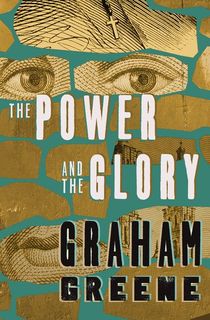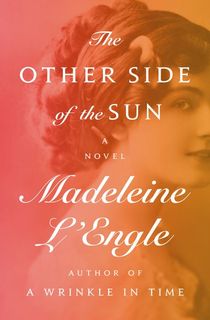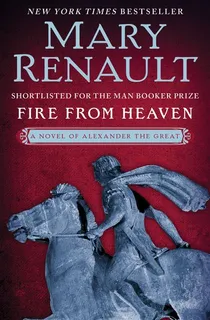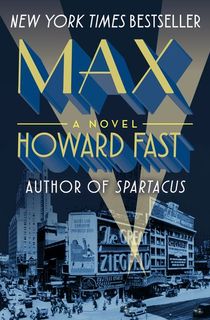Some people say history is boring. Those people have not read enough good historical fiction. The genre is really the best of both worlds, taking the most interesting parts of history and combining them with original and interesting stories.
Many authors have made their careers writing historical fiction covering nearly every era of human history. From political intrigue in the courts of royal Europe to mysteries in the Roman Empire to multi-generational meditations on the American Dream, the great authors on this list have covered it all. Here are 17 historical authors we can never get enough of.

The Killer Angels
One of the best historical fiction novels about the Civil War—it won the Pulitzer Prize, after all—Micheal Shaara's incredibly researched work delves into the Battle of Gettysburg, and then goes far deeper into what the war was really about.
"Shaara's book tells the story from both sides—North and South—and brilliantly captures the experience of the battle."—USA Today

Her First American
Upon publishing this novel in 1985, the New York Times wrote that Lore Segal had come “closer than anyone to writing The Great American Novel." The mesmerizing story follows Ilka, a newcomer to the US post WWII who leaves the immigrant enclaves of New York City and heads west in search of “the real America.”
Soon she finds Carter Bayoux, “sitting on a stool in a bar in the desert, across from the railroad.” Carter is older, experienced, and Black, and to Ilka, he represents everything she was looking for in a changing America. But choosing Carter may mean sacrificing her own future.

Wolf Hall
Hilary Mantel is one of the most critically acclaimed historical fiction authors today. She has been publishing works since the mid-1980s, but she is best known for her Thomas Cromwell series. The trilogy follows the rise and fall of Cromwell, advisor to King Henry VIII and architect of the English Reformation. 2009’s Wolf Hall, which chronicles Cromwell’s rise to power in Henry’s court, is the first in the series.
Both Wolf Hall and its sequel Bring Up the Bodies were awarded the Booker Prize, making Mantel the only woman to have won the award twice. The series’ final instalment, The Mirror & the Light, was released in 2020. Mantel’s work has been praised for its strong characterization and its commitment to accurate historical detail. Although her works can be long—Wolf Hall is over 650 pages—her mastery of the craft always has readers wanting more.

The Power and the Glory
Often considered one of the greatest British novelists of the 20th century, Graham Greene was a prolific author. He was shortlisted for the Nobel Prize for Literature twice and, in addition to his many novels, wrote the screenplay for the noir classic The Third Man. His works were known for exploring political issues of the modern world, often through a historic lens. Many of his books, like The Power and the Glory, were also often heavily influenced by his Catholic faith.
The Power and the Glory is set in the Mexican state of Tabasco in the 1930s, a time when the government was actively trying to suppress Catholicism in the country. It follows a man known only as the “whisky priest” as he travels around the country as a fugitive. Haunted by his sinful past, the priest is forced to choose between keeping himself safe and doing what he knows is right. One of Greene’s most stirring works, The Power and the Glory was named by Time magazine as one of the hundred best English-language novels written since 1923.
Related: 13 Must-Read Graham Greene Books

Daughter of Fortune
A recipient of the 2014 Presidential Medal of Freedom, Isabel Allende is one of the most well-known Spanish-language authors in the world. Before she began her career as a novelist, Allende was forced to flee her native Chile when she and other family members were targeted by the brutal regime of dictator Augusto Pinochet. She published her first novel while in exile in Venezuela. Many of her books, including Daughter of Fortune, cover the history of Chile and other Latin American countries.
An Oprah’s Book Club selection, Daughter of Fortune tells the story of Eliza Sommers. Orphaned at a young age, she was raised in the British colony of Valparaíso, Chile by the English Sommers siblings. She eventually falls in love with Joaquín, a clerk who works for the siblings, and follows him to northern California when gold is discovered there. As Eliza, now pregnant, makes her way north and navigates life in Gold Rush-era California, she begins a journey to find her own personal freedom.

The Other Side of the Sun
Best known for her young adult fantasy novel A Wrinkle in Time, Madeleine L’Engle also penned quite a few works of historical fiction. Her 1971 novel The Other Side of the Sun is a family drama set in the post-Civil War American South.
Stella is only 19 when she marries Theron Renier and finds the atmosphere of his family’s home in Florida very different from her native England. When Theron is sent away for work, Stella is left alone with the Renier family. As dark secrets begin to come to light, Stella will have to work to find the truth. The Other Side of the Sun is a masterwork of suspense that also touches on issues that are painfully relevant to this day.

The Pillars of the Earth
Ken Follett is the author of several New York Times-bestselling thriller novels with a historic twist. 1989’s The Pillars of the Earth is the first book in his Kingsbridge series and marked a departure from his usual focus on World War II-era spies. Pillars focuses on the construction of a cathedral in the fictional town of Kingsbridge, England. Set in the 12th century, the characters in the novel struggle to build the cathedral while England is plunged into civil war and law and order quickly disintegrate.
Praised for its depiction of life in Medieval England, The Pillars of the Earth has been adapted into several mediums including board games, a television miniseries, a Danish musical, and a video game. Later entries in the series follow the lives of Kingsbridge citizens in later periods of English history, with the most recent book, The Evening and the Morning, serving as a prequel set during the 900s as Vikings raided the English coast.

Fire from Heaven
Mary Renault was best known for her novels about ancient Greece. Many of her works featured portrayals of famous Greek figures from antiquity including Socrates and Plato. In the 70s and early 80s, she penned a series of works focusing on the life and legacy of Alexander the Great. The first of these books is Fire From Heaven, which covers Alexander’s childhood through the death of his father.
Renault’s books were notable for their frank and sympathetic portrayals of gay relationships. She wrote most of her novels while living in South Africa from 1948 until her death in 1983, where attitudes towards LGBT+ individuals were more liberal than in Britain. Fire From Heaven depicts the origins of Alexander’s relationship with his lover Hephaestion.

Ragtime
One of the great American novelists of the 20th century, E. L. Doctorow penned many famous works of historical fiction. Most of his works are set in the first half of the 20th century in various parts of America. He became known for his style of interweaving fictional characters with real-life historical figures to tell his stories.
His best-known work is 1975’s Ragtime. The novel focuses on a series of events that occur in the New York City area between 1902 and 1912 and involves a wide cast of characters from various walks of life. The wide expanse of the novel allows Doctorow to cover major events of the era as well as the experiences of marginalized groups like immigrants and African-Americans. Ragtime was made into a movie in 1981 and later into a Tony Award-winning Broadway musical.

Tipping the Velvet
Welsh author Sarah Waters is best known for her novels set in the Victorian era that often feature lesbian protagonists. She was inspired to write her first book, Tipping the Velvet, while doing research for her PhD thesis. Her works are often praised for how much thorough research goes into them.
Tipping the Velvet follows Nancy “Nan” Astley, a working-class girl from Kent who falls in love with Kitty, a male impersonator who she soon follows to London. The two have a tumultuous relationship as they also begin performing together on stage. The novel was critically acclaimed upon its release and was adapted into a television miniseries a few years later.

The Good Earth
Winner of the 1938 Nobel Prize in Literature, Pearl S. Buck was an American writer whose works of historical fiction mainly focused on Chinese history. The daughter of missionaries, Buck spent her entire childhood in China and developed a deep appreciation for Chinese people and their culture. Her Pulitzer Prize-winning novel The Good Earth tells the story of a Chinese peasant farmer Wang Lung and his wife O-lan as they work to create a life for themselves in early 20th century China.
Buck wrote two sequels to The Good Earth that follow the descendants of Wang Lung and O-lan, and the books are sometimes credited by scholars as having garnered sympathy for the Chinese people from American readers, especially as the Japanese invaded in the late 1930s. Buck was unable to return to China after her last trip in 1934 but spent the rest of her life dedicated to various humanitarian causes. In 1949, she co-founded Welcome House, the first international, interracial adoption agency in order to combat the popular notion that mixed-race and Asian children were “unadoptable.”

The Silver Pigs
Lindsey Davis is best known for her multiple detective series set in the ancient Roman Empire. The first of these is 1989’s The Silver Pigs, which introduced readers to Marcus Didius Falco. Falco is a delator, which Davis translates as “private informer”, an imperial agent for Emperor Vespasian. In his first mystery, Falco investigates a conspiracy to steal silver ingots in Roman Britain.
There are 20 Marcus Didius Falco mysteries in total. Since 2013, Davis has been writing a sequel series that follows the adventures of Falco’s adopted daughter Flavia Albia.

Max
Best known for his 1951 novel Spartacus—the basis for the 1960 Stanley Kubrick film of the same name—Howard Fast wrote novels set in many different historical periods. He is also known for his television and film screenplays, including the script for Spartacus and several episodes of How the West Was Won. He has also been lauded as being one of the first writers to break through the constraints of the Hollywood blacklist, which he was put on after refusing to name names of other suspected Communists to the House Un-American Activities Committee in the 1950s.
Related: I Am Spartacus! Remembering Kirk Douglas, 1916-2020
His 1982 novel Max is set at the turn of the century during the early days of the film industry. Max Britsky developed his entrepreneurial spirit at a young age after his father walked out and he had to find ways to provide for his mother and siblings. As he grows up, his love of theater and his business instincts lead him to become one of the first movie moguls in American history. But Max soon finds that great financial success sometimes comes at a cost.

Jazz
A recipient of the Pulitzer Prize, the Nobel Prize in Literature, and a Presidential Medal of Freedom, Toni Morrison is one of the most celebrated authors of all time. Her works address the long-term consequences of racism in the United States and often involve historical themes. Her 1992 novel Jazz is a story of love and obsession set during the Harlem Renaissance. According to Morrison, Jazz is the second book in a trilogy that explores African-American history, beginning with Beloved and ending with Paradise.
Jazz begins when Joe Trace, a door-to-door salesman who sells beauty products, shoots his young lover Dorcas. At her funeral, his wife Violet attacks the corpse with a knife. As the characters in the novel explore this event, Morrison explores their life stories, transporting the reader from Harlem to the American South in the mid-19th century.
Related: 30 Must-Read Books by Black Authors

Black Narcissus
Many of Rumer Godden’s best-known works were inspired by her childhood in British colonial India. Her first best-seller was 1939’s Black Narcissus. The novel follows five Anglican nuns as they attempt to establish a school and health clinic in the remote foothills of the Himalayas. The sisters have occupied an abandoned palace where a general housed members of his harem, and the building’s scandalous history in addition to the isolation and conflict with the local population just might be too much even for the purest of heart.
Godden’s story of the tension between faith and temptation was very well received. It was adapted into a Golden Globe and Oscar-winning film starring Deborah Kerr as well as an FX miniseries in 2020.

The Memoirs of Cleopatra
Margaret George is best known for her fictionalized biographies of famous historical figures. She first achieved notoriety with her novel The Autobiography of Henry VIII which, 35 years after its publication, is still ranked as one of the most popular fictional portrayals of the infamous English king. Her work on these biographies is famously meticulously researched. Several of her novels focus on notable women from history and myth including Mary Magdalene, Queen Elizabeth I, and Helen of Troy.
In 1997, she published The Memoirs of Cleopatra, which traces the entire life of Cleopatra VII, popularly known as the last Pharaoh of Egypt. The book chronicles her early life, her famous romances with Julius Caesar and Mark Antony, and her famous death. Cleopatra was critically acclaimed upon its release and was adapted into a miniseries in 1999.

Dynasty of Death
Taylor Caldwell was a prolific author who often centered her stories on actual historical events and people. Many of her books explored the American Dream and the tension between the desire for wealth and power and moral values like family and love. Her novels are set at different times in American history as the country transformed from an agrarian society into an industrial superpower.
Caldwell’s debut novel was Dynasty of Death, an intergenerational saga of two families as they turn a small munitions factory into a global empire. The story begins in the fictional town of Windsor, Pennsylvania in 1837 when Joseph Barbour immigrates from England with his family. Joseph soon starts a gunpowder firm with his neighbor, Armand Bouchard, and tensions rise between his two sons, one an altruistic idealist and the other an ambitious and violent egoist. Dynasty of Death follows the Barbour and Bouchard families up to the eve of World War I while their story is continued in the novel’s two sequels.
Featured image: Wikimedia Commons








